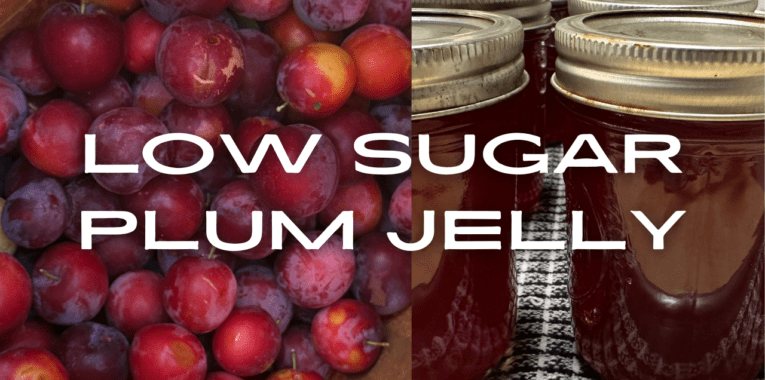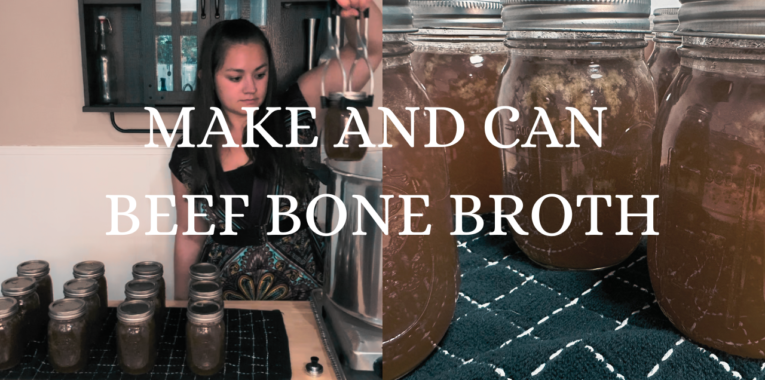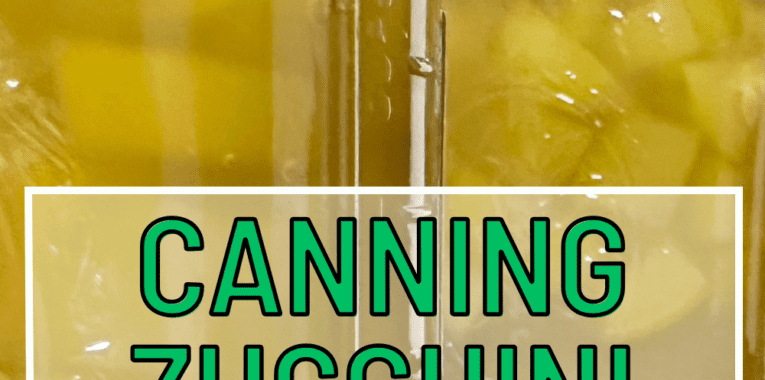This low sugar plum jelly is a perfect mix of tart and sweet! It’s super easy (and fast) to make using a steam juicer!
How Much Fruit Do I Need?
One thing that always frustrates me about canning recipes is trying to figure out how much fruit I need. But that’s where this recipe really shines! You need as much fruit as you have or want to get! The necessary pectin, calcium water, sugar, and lemon juice is added per cup of juice, so it doesn’t matter if you have 2 cups or 20 cups of juice, you can still use this recipe!
As an Amazon Affiliate, I earn from qualifying purchases.
Supplies to Make Plum Jelly
To make this plum jelly, you need jars, clean, new lids, and bands! If haven’t read my post about my favorite canning supplies, I recommend taking a look for items that will make canning this recipe easier!
You also need Pomona’s Universal Pectin for this recipe, which is formulated specifically for low- or no-sugar canning recipes. Since I use Pomona’s quite often, I purchase the pectin powder in bulk. You can find it available in bulk here.
A steam juicer makes this project so much faster, and I absolutely love mine! If you plan on making much juice and/or jelly, a steam juicer is definitely worth the investment.
I also highly recommend purchasing either a steam canner or the Ball freshTECH Electric Water Bath Canner and Multi-Cooker, if you are interested in another way to save stovetop space or if you have a glass stovetop and don’t want to put a heavy canner on top of it. I use it exclusively for anything I water bath can. The best feature of this canner is that it can easily hold 12-14 half-pint jars! For this particular recipe, I was able to make 11 half-pint jars and 7 quarter-pint jars of plum jelly by stacking my jars!
YouTube Video
Plum Jelly Recipe
Recipe created using Pomona’s Pectin Create Your Own Recipe.
Ingredients
Instructions
- First, clean and remove stems from plums.
- Put plums in strainer pot of steam juicer and fill bottom pot with water.
- Heat steam juicer until water is simmering.
- Simmer and add water, if needed, until juice from the plums gets lighter.
- Remove from heat.
- Add plum juice, lemon juice, and calcium water to a large stock pot.
- Heat over high heat until boiling.
- While waiting for juice to boil, mix sugar and Pomona’s Pectin. Set aside.
- Once juice is boiling, slowly add sugar and pectin mixture, whisking or stirring constantly to prevent the pectin from clumping.
- Bring mixture back up to boiling. Then, remove from heat.
- Carefully skim foam off of your jelly, if any formed.
- Store jelly in refrigerator or continue with canning instructions.
- Fill clean, warm jars with jelly, making sure to leave 1/4-inch headspace.
- Clean jar rim off to ensure no jelly is on it.
- Put a clean lid on and screw on band until fingertip tight.
- Put in water bath canner.
- Fill remaining jars until jelly is gone.
- Process in a water bath canner for 10 minutes, adjusting for altitude.
- Remove jars and set on towel or wooden cutting board to cool for 12-24 hours.
- Remove bands and check seals. If any jars failed to seal, store in refrigerator and use first.
- Wash jars and store without bands on.


